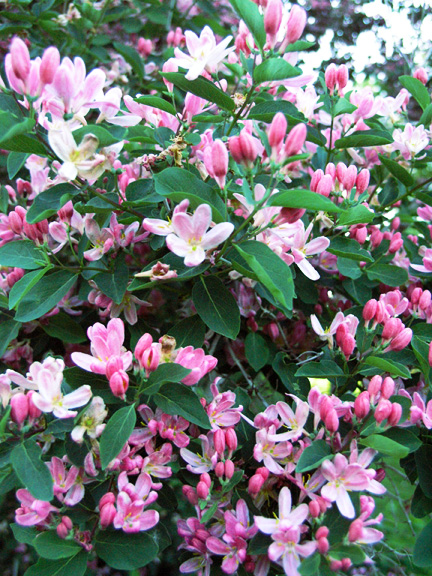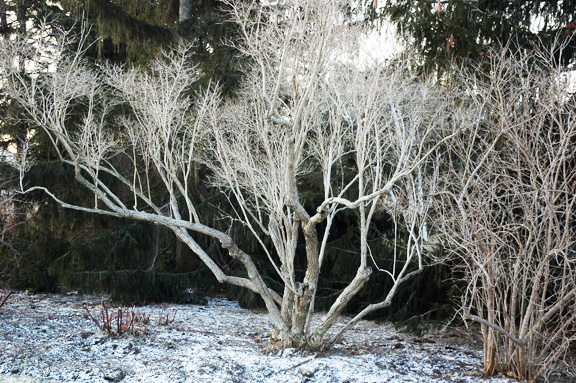
Woody > Lonicera > Lonicera tatarica > Lonicera tatarica
Lonicera tatarica
Tatarian Honeysuckle
Origin: Asia and Russia.
Mike's
Opinion


"
A once popular landscape shrub that has now fallen into disfavour because of its invasive propensity establish in itself in marginally cultivated areas.
Michael Pascoe, NDP., ODH., CLT., MSc. (Plant Conservation)
"
| Family |
| Caprifolaceae |
| Genus |
| Lonicera |
| Species |
| tatarica |
| Category |
| Woody |
| Type |
| Shrub (deciduous) |
| Pronunciation |
| USDA Hardiness Zone |
| 3-8 |
| Canadian Hardiness Zone |
| 3-9 |
| Temperature (°C) |
| -34 to -40 |
| Temperature (°F) |
| -30 to -40 |
| Height |
| 3 m |
| Spread |
| 3 m |
Photographs
Description and Growing Information
Flowering Period
| General Description |
| Multi-stemmed shrub that is very wild, and weed-like in form and culture. |
| Landscape |
| Not recommended for landscape use. |
| Cultivation |
| Tolerant of a wide variety of conditions from partial shade to full sun and even marginal soil conditions. |
| Shape |
| A broad spreading shrub. |
| Growth |
| Fast |
| Pests |
| Grey mold, powdery mildew, wood rot, and honeysuckle aphids. |
| Bark/Stem Description |
| Very uneven and rough, a dark brown/grey colour. |
| Flower/Leaf Bud Description |
| Flattened and closely appressed with valvate lower scales. |
| Leaf Description |
| Opposite, simple, and oval, they are 2.5-7 cm long, 2.5-5 cm wide. They are a dark green in summer, turning pale yellow in autumn. |
| Flower Description |
| Flowers are pink, white or red and about 2.5 cm long. |
| Fruit Description |
| A red berry, 60 mm in diameter. The berries start to colour in late June to August. Very attractive in fruit. |
| Colour Description |
| Foliage is green but sometimes has a bluish tinge while the fruit is bright red and quite attractive. |
| Texture Description |
| The bark is very coarse and uneven. The foliage and flowers are fairly smooth. |

